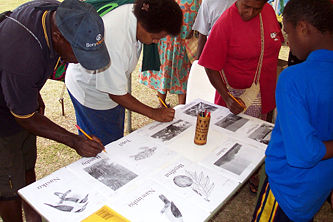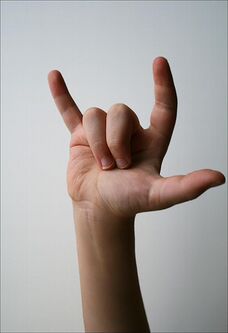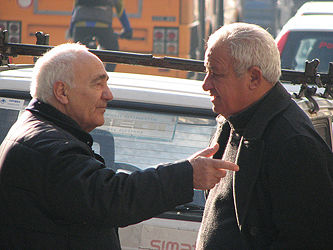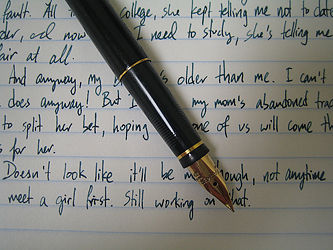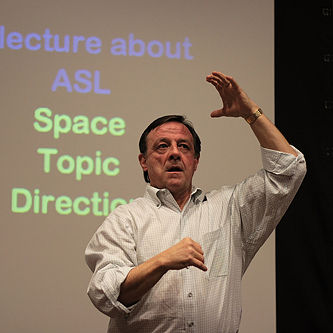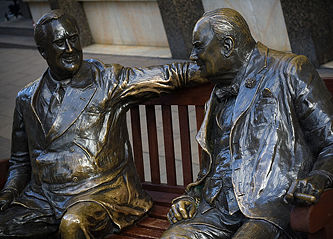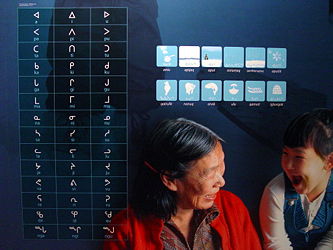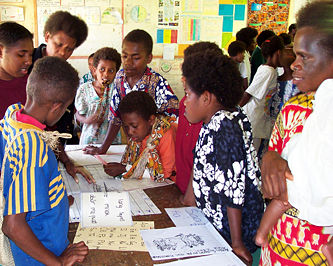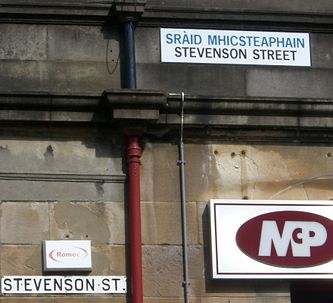Linguistics/Gallery: Difference between revisions
Jump to navigation
Jump to search

imported>John Stephenson (Info on keyboard) |
Pat Palmer (talk | contribs) m (Text replacement - "adult" to "adult") |
||
| (8 intermediate revisions by 4 users not shown) | |||
| Line 1: | Line 1: | ||
{{subpages|group=linguistics}} | |||
<center> | |||
< | {{Gallery-mixed | ||
{| | |caption=Linguistics gallery | ||
| | |width=333 | ||
|lines=4 | |||
| | |Spoken-language-naples-bike.jpg|[[Human]]s instinctively [[communication|communicate]], as the conversation of these men in [[Naples, Italy]], [[Italy]] shows. | ||
|Literacy Day Vanuatu 2005.jpg|People in Port Vila, [[Vanuatu]] express their language equivalents for the pictured items. Vanuatu has over 100 languages, most of which are unwritten. | |||
|Asl-i-love-you.jpg|''I love you'' in [[American Sign Language]]. | |||
| | |Spoken-language-naples.jpg|Stopping and talking is central to human [[culture]]. | ||
|Writing-pen-english.jpg|An example of [[written language]] - in this case, [[English language|English]]. | |||
| | |Asl-lecture-in-asl.jpg|This lecture on American Sign Language is being conducted in ASL. Today, much research on [[sign language]] comes from [[linguist]]s who are themselves [[deafness|deaf]]. | ||
|Chinese-keyboard.jpg|[[Language]] may be written using different [[orthography|orthographies]] using modern [[technology]]. This is a [[Taiwan]]ese [[computer keyboard]] allowing input in [[Chinese characters]], [[romanisation|romanised]] [[Chinese language]]s and a script explicitly indicating Chinese [[pronunciation]]. | |||
|marines-poo-diving-shop-japan.jpg|Why this shop name in [[Japan]]? Linguists also investigate how language is used, but how it is 'abused' is left to others. | |||
| | |Vowels-spectrogram-british-english-adult-male.jpg|[[Phonetics]] often involves modern [[technology]] to analyse speech, providing evidence for linguists on the nature of [[spoken language]]. This [[spectrogram]] as used in [[acoustic phonetics]] shows the [[frequency|frequencies]] of vibrations involved in the production of six [[British English]] [[vowel]]s by an adult [[male]] [[native speaker]]: from left to right, the vowels as in ''bee'', ''sue'', ''herd'', ''or'', ''bar'' and ''buy''. The bands of energy ([[formant]]s) are distinctive for each vowel; for example, the lower the bottom formant ('F1'), the higher the vowel is articulated in the [[mouth]]. The greater the distance between F1 and the second-lowest 'F2' formant correlates with how far back in the mouth the vowel is produced. This image was created using the [http://www.praat.org Praat] freeware program. | ||
|Churchill-roosevelt-statues.jpg|One reason to study [[linguistics]] is its importance in human culture - so important is this urge to [[communication|communicate]] that it is often depicted in [[art]]. | |||
| | |Inuit_language_exposition_at_the_2006_Winter_Universiade_Games.jpg|Panel from an [[Inuit language]] exposition at the 2006 Winter Universiade Games in [[Turin]], Italy. | ||
|Pentecost Island -Vanuatu- vernacular languages literacy materials.jpg|Vernacular languages literacy materials used on Pentecost Island in Vanuatu. | |||
|Scottish-gaelic-english-bilingual-sign.jpg|Newer streets signs in parts of western [[Scotland]] display names in [[Scottish Gaelic language|Scottish Gaelic]] above [[English language|English]] - older signs are in English only. The promotion or proscription of languages is called ''[[language planning]]'' and is one topic studied in [[sociolinguistics]]. | |||
| | }} | ||
</center> | |||
| | :''Return to [[Linguistics]]'' | ||
| | |||
:''Return to [[Linguistics]]'' | |||
Latest revision as of 12:21, 7 August 2024
| Linguistics gallery | |||||||||||||||||||||||||||||||||||||||
| |||||||||||||||||||||||||||||||||||||||
- Return to Linguistics

